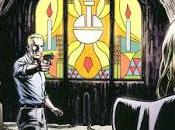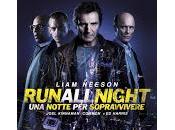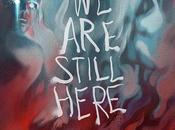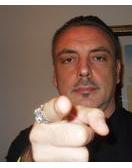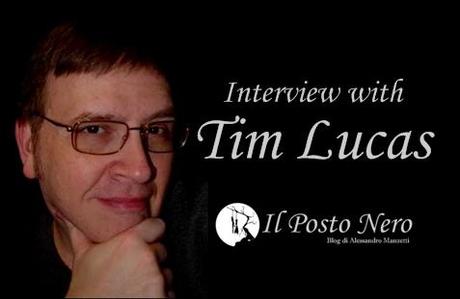
Interview with Tim Lucas
[Alessandro Manzetti] You launched Video Watchdog in 1985, the first consumer guide to home video, dedicated to cult, horror and fantasy cinema. After the early articles and reviews on various magazines, you than founded your own journal, covering a wide variety of topics, discussions, interviews, supported by a team of prestigious contributors, virtually the best critics and historians of fantasy cinema. Video Watchdog has quickly became an essential reference for all lovers of cinema. It’s a long history of success that still continues. What is the special approach to film criticism that made so unique Video Watchdog? You're pursuing new ideas and projects?
[Tim Lucas] When I began reviewing home video releases, prior to founding Video Watchdog magazine in 1990, everyone else was reviewing only the movie; no one was telling consumers if the film looked good, if it was complete, or if it was badly cropped. Home video reviews were indistinguishable from ordinary movie reviews. I convinced my editor at Video Times (my employer at the time) that we needed to review the videotape presentation of the movie, as well as the movie. So when I began my magazine and was in total control of these decisions, I took this idea a step further and began to compare different versions of the same film as well.
My initial goal was to write about horror and fantasy films seriously, and to hold them up to the same critical standard as any other film. Twenty years later, I think we have achieved this goal. Many of our early readers have gone on to work in important positions in the home video industry. Horror and fantasy films are taken seriously -- perhaps even too seriously, since it's almost impossible to get a film produced nowadays unless it's an adaptation of a comic book. But dozens of important films have been restored and even saved from extinction by the ethic VW had proposed and broadcast among its readers.
My approach to reviewing home video went viral with the growth of the internet, but it is still difficult to find reviewers who can review horror and fantasy films with sophistication and with a grounding in the other arts. Most people who review horror films don't seem to know about much other than horror films, even now. So this sophistication is currently the hallmark of our coverage, but we still attend to variant editions of films, discussing deleted scenes and so forth. We are also paying attention to what's happening online with avi downloads, as an important measure of horror and fantasy cinema seems to be going back underground, as it is apparently unsustainable in the current DVD marketplace, and in the current troubled economy.

[AM] In 2007 you published All the color of the dark, which is considered the most comprehensive and detailed essay on the cinema of Mario Bava, the great master of horror, which won the International Horror Guild Award. It is a work that took more than 30 years of research. Bava has established unprecedented genres using innovative techniques and new languages, innovating the field of special effects. His influence is very deep on the cinema. According to findings from your research, what are the projects that Bava was not able to accomplish? What is the film and the short film in which the language of Bava is more completely expressed?
[TL] Bava's greatest creative frustration was that he was not able to work more in the field of science fiction. I discovered that he was the true director of the first Italian science fiction film (La morte viene dallo spazio, 1958), credited to Paolo Heusch, and throughout the 1960s, he tried in vain to continue in this direction; he was still trying in the last year of his life, 1979-80, when he developed a fantastic concept for a new sf film with Dardano Sacchetti, about the discovery of a fabulous mural at the end of space, whose figures acquire malevolent life as the barrier is surpassed. After Bava died, Sacchetti modified the idea into a horror film, which Mario's son Lamberto Bava filmed under the title Demons. I think the ideal starting point for any study of Bava is the film I tre volti della paura, a feature consisting of three short films; I think the episode called La goccia d'acqua is the finest thing he did
[AM] You have been on the set of David Cronenberg's film Videodrome, you lived the whole production behind the scenes. From this experience was born your book Videodrome, which includes commentary and analysis of the film, interviews with the director, cast and crew, photographs. Can you tell us about your experience about the first day on set?
[TL] My first day on the set was somewhat disorienting because much of it took place on location at a hotel, not on a set. It was the Spectacular Optical convention scene near the end of the picture. I met David Cronenberg some months before and we were very simpatico, with many common interests in films and books. James Woods went out of his way to be friendly, Debbie Harry was more insulated and very intent on giving a good performance in her first major film. I wasn't allowed to see the script until I arrived and, as I perused the pages, I kept noticing references to flesh, and different things becoming flesh ,which filled me with a sense of deja vu, because my first (never published) novel was called The Audience Becomes Flesh written when I was 18. I also remember discovering that I had an allergy to certain food and drink combinations, as I came back to location from dinner that night with my face feeling on fire under the bright klieg lighting. I had a terrible allergic reaction. Cronenberg thought my sudden disfigurement was interesting. My prevailing memory of that day's shooting is of the poor male dancer who had to have a fellow female dancer slide down the length of his arm at the end of their choreographed number, her costume material was quite abrasive and his skin was nearly shredded at the end of the shooting. He had to do it and hold a smile if he wanted to stay in the front of the medium shot. My introduction to the sadism of picture-making. I also remember Cronenberg startling the audience, as he was filming their reaction to the Barry Convex assassination, by firing a pistol loaded with blanks. I found the empty blank cartridge on the floor and kept it.
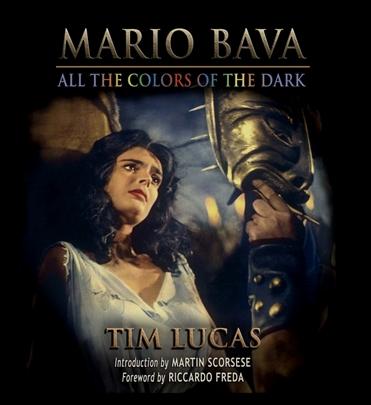
[AM] You have also written screenplays, poetry and two novels, Sprokets Throat (1994) and The Book of Renfield: A Gospel of Dracula (2005), recently published in Italy by Gargoyle Books (Il Libro di Renfield 2011). The Book of Renfield is an innovative rewriting of one of the masterpieces of horror literature, Bram Stoker's Dracula, based on a different point of view, the Renfield’s one, who has been overlooked by Stoker as a secondary character, now becomes central in your novel. Who's Renfield? How has your personal experience influenced the choice to develop this character?
[TL] Renfield is the mentally disturbed minion of Dracula, whom the Count forces to simultaneously feed and debase himself by drinking only the blood of insects and vermin. In films, he has been played by such diverse actors as Dwight Frye, Klaus Kinski and Tom Waits. I think he is the best-known, best-loved supporting character in all classic horror fiction, and I thought he would be the ideal character for a reworking of Dracula, written in the manner of Mary Reilly (about a housemaid working for Dr. Jekyll) or Theodore Rozsak's The Memoirs of Elizabeth Frankenstein, which also offered new perspectives on well-known stories.
But what interested me most about Renfield, as a character, is the question of who he was before he became an inmate of Dr. Seward's asylum. Why did Dracula choose him? It always seemed to me that Stoker portrayed Renfield as a perverse analog to John the Baptist (described in the Bible as a wild prophet who ate locusts), who boasts to everyone of the inevitable coming of a different Lord and Master. So I decided to investigate the untold story of Renfield's childhood, where I discovered exactly what incidents predisposed him to becoming the ideal slave and pawn of Dracula. These incidents were partly invented and partly based on incidents from my own childhood, as someone who was raised for several years in foster home situations
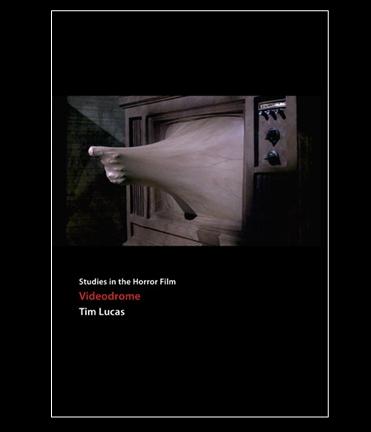
[AM] The approach of the novel is basically psychological, what are the most developed issues and which are those that the reader can identify himself with? Of course, it would be useful for everyone to read his own documentary of consciousness, as you wrote in Renfield
[TL] I think Renfield's most developed issue is clearly Oedipal. The absence of a mother in his life stoked within him a desperate need for that relationship, that love, and that nurturing. Consequently he harbors an oral frustration and must be satisfied orally, and Dracula, who Stoker tells us can become a bat or a wolf or even his own coachman, responds to this by manifesting himself in Renfield's consciousness in a female form.
There is a scene in Stoker's Dracula where the vampire uses a fingernail to open his bared breast so that Mina will feed from his blood; it has a religious connotation. In The Book of Renfield, I have Dracula assume this female form to literally mother Renfield, whom he/she takes to her breast and feeds with an illusory milk that becomes blood. Renfield's absent father is substituted by his adoption by a vicar, who in Renfield's earliest memories is a tall man in a dark cape who takes him into the garden at night to admire the bats in flight. So I carefully constructed a psychological profile whereby the appearance of Dracula would seem to come in answer to all of Renfield's deepest yearnings
[AM] In the book there are many metaphors, there is a second reading between the lines, we known that the story actually travels on a double track, narrative and existential. A second parallel road take us to touch the social and religious themes, some of which are very current. What is the purpose of the novel in this case, to answer questions or to create new ones? Can The Book of Renfield be defined as the humanization of Bram Stoker's Dracula?
[TL] Thank you, I find that definition very gratifying. The contemporary parallels are present in the book because they were present in life. In the penultimate chapter, set in 2001, I have a character named Richard Harland Smith reading Dracula at the time of the 9/11 attack in New York, and he notes that the sense of invasion and despair in the novel is present on the streets of his city.
In fact, Richard is not a character, but a real friend of mine, and what he writes in the novel is something he actually wrote and posted in an online discussion group at the time of the attack. I was writing The Book of Renfield at the time and his discovery of the parallel gave my story a place in which to resolve. I don't like the idea of writing a novel that is purely escapist; if anything, I like to give my reader the sense of escape, only to find himself emerging on the front lines of an urgent conflict rooted in reality. Remember: In Stoker's Dracula, the story was told entirely in the form of letters and journal entries , that was how he made the story seem more rooted in the reality of his day, so I had to find some way of doing the same.
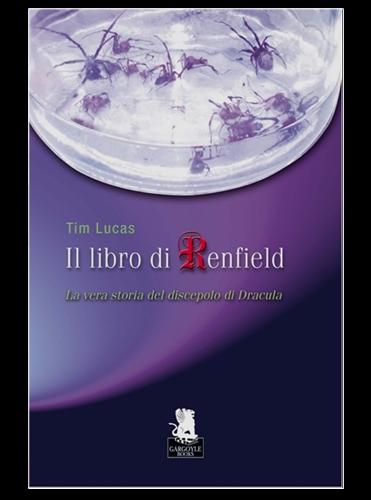
[AM] Although written as a modern novel in the Book of Renfield you’ve managed to reproduce the style and language of Bram Stoker. What are the keys that you used? How would you describe the Stoker writing?
[TL] I find it very difficult to be conscious about this because, truthfully, it was all written very instinctually. I've read a great deal of fiction from that period, and I had recently re-read Dracula prior to starting The Book of Renfield, so the author's voice and cadences stuck with me. But I didn't ever study his style of writing or attempt to emulate it; I just empathized my way into those characters and let them speak through me. A good deal of the novel's writing actually felt like taking dictation
[AM] Stoker had a great passion for the theater, enough to change his life and to create the conditions for the birth of his Dracula. What is your relationship with this form of communication? Have you ever thought of writing for the theater?
[TL] No, because I have no real connections in that area, or should I say no sponsors? However I have written several screenplays, two of which are presently optioned by major directors, Joe Dante and Ernest Dickerson. And of course, I have been writing film criticism professionally now for close to 40 years, since I was 15, so I have deep-rooted experience in newspaper and magazine journalism and the film business.
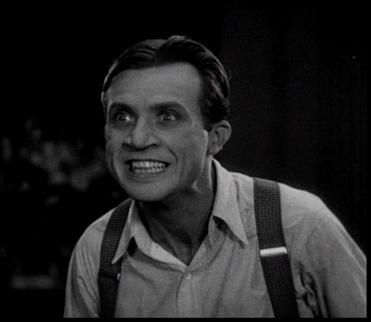
[AM] Going back to the Book of Renfield, what do you think about a film adaptation? Is there a projects already in progress? Who could be the director and the main actor?
[TL] There is no screenplay yet because writing it would require me to spend another year in the past, and I want to move forward -- unless someone pays me well to do the job. I proposed to my friend Guillermo del Toro that he direct it, because the novel has children and insects and iconography (all important traits of Guillermo's film work, coincidentally) and I know that he has read the novel; he told me he loved it, but he feels there needs to be a script before anyone could be tempted to produce it. Another friend, Robert Tinnell, who is currently working with me to prepare a proposed film of my novel Throat Sprockets (parts of which I directed last November), is a great admirer of the novel and he wants very much to film it himself.
The book was conceived to be a very visual reading experience and I know it would translate beautifully to cinema. When I visualize Renfield, my first choice would be Eddie Izzard, who I think perfectly embodies the character Stoker described... but I think the Hollywood image of Renfield is so engrained in the popular consciousness that a movie might be tempted to cast someone more in the vein of Dwight Frye. In that case, Steve Buscemi would probably be the first actor I would call
Thank you Tim for being the guest of Il Posto Nero
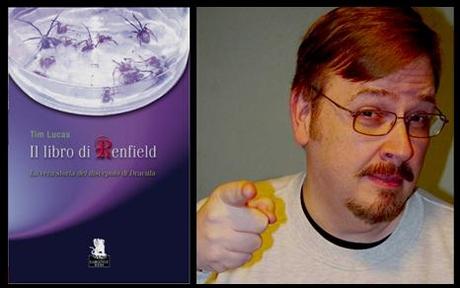
Guest Profile
Tim Lucas is a film critic, novelist and scriptwriter. He founded the Video Watchdog magazine in 1990, a critical insight into the cinema, that is still the essential reference for fans of cinema and home video. In 2007, after a long research he published All the Colors of the Dark, a critical essay on Mario Bava, one of the most complete and comprehensive work on the great master of horror film, winner of the International Horror Guild Award. He has written two novels, Throat Sprockets (1994) and The Book of Renfield: A Gospel of Dracula (2005), recently published in Italy by Gargoyle Books under the title Il Libro di Renfield (2011), a prequel to the original Dracula novel by Bram Stoker.
(Interview by Alessandro Manzetti)
leggi l'intervista in italiano su La Tela Nera

